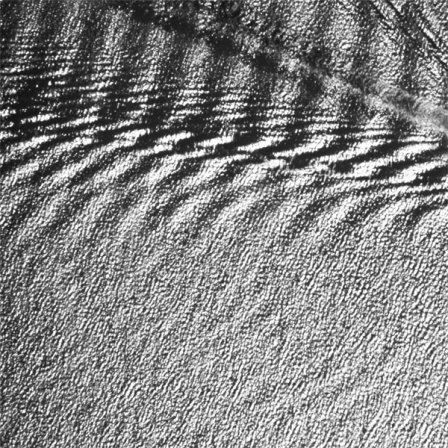I can’t help but listen to Glass Canyon, Marielle V. Jakobsons’s new solo album, visually. Frankly, Marielle’s images are intriguing: purple sands, crystal orchards, cobalt waters, dusty trails, albite breath, and shale hollows. The images find their consistency (as even purple finds its etymological origins in hard matter, a shell) in solidification or re-solidification (depending), and present themselves as aural sculptures — impermanence yearning for at least semi-permanence. Solidification only necessitates a holding of something in place, formed and for awhile. What’s held in place in each image, leaving aside the ‘problem’ of metonymy, is mutable nature. The act of holding itself is a tension between the synthetic and the organic: part artifice, part nature; part electronic, part acoustic. Marielle’s Twitter profile reads: “I make sounds with strings and electronics.”
Even as I claim that Marielle’s songs are aural sculptures, they’re not tableaux. The songs on Glass Canyon do very little to replicate the recognizable sounds of their titular images. In the first minutes of “Purple Sands,” you hear something like a breath or waves — a ‘natural’ sending out and then retracting. But as that subsides, so does any semblance of the world. Marielle hasn’t made an alien music, but neither has she made something thoroughly rooted, as noted above, in bioacoustics. (She’s not the first to do so and by no means the most abrasive in her divergence; in fact, it’s easy to call Glass Canyon an indisputably gorgeous and accessible album.)
The presence of the violin makes me want to use the word “classical,” but there is nothing particularly classical in the language of Glass Canyon. Likewise, ambient; no, the album is too engaged and too engaging. Instead, what Marielle has replicated, as Sean McCann and Troy Schafer alongside her have replicated, is the exuberance of nature, the subtle, superabundance of the given thing itself — never more showy than it needs to be and slightly estranged. Never totally contrasted and always subtly blended. The relationship between the violin and the electronics is, as I wrote above, a tension — both nervous and balanced — that finds itself on the cusp of losing the other.
And Glass Canyon is a frantic album. Quiet, quick beats barely emerge and swell in the deep. Although they don’t hold the entirety of the album in their tension, they come up sporadically as a reminder. One thinks of Liturgy’s ‘naturalistic’ “burst beat,” only Marielle’s beats, which are more natural, have the weight and intensity of a pulse: they are more felt than heard, and shape rather than force an image. To hold something means that it’s capable of going away: water, flora, the body, space itself. Maybe the last one is a bit of a stretch, but what is sculpture if not an attempt to interrogate and fill space, even with the memories of space itself?
More about: Marielle V. Jakobsons


